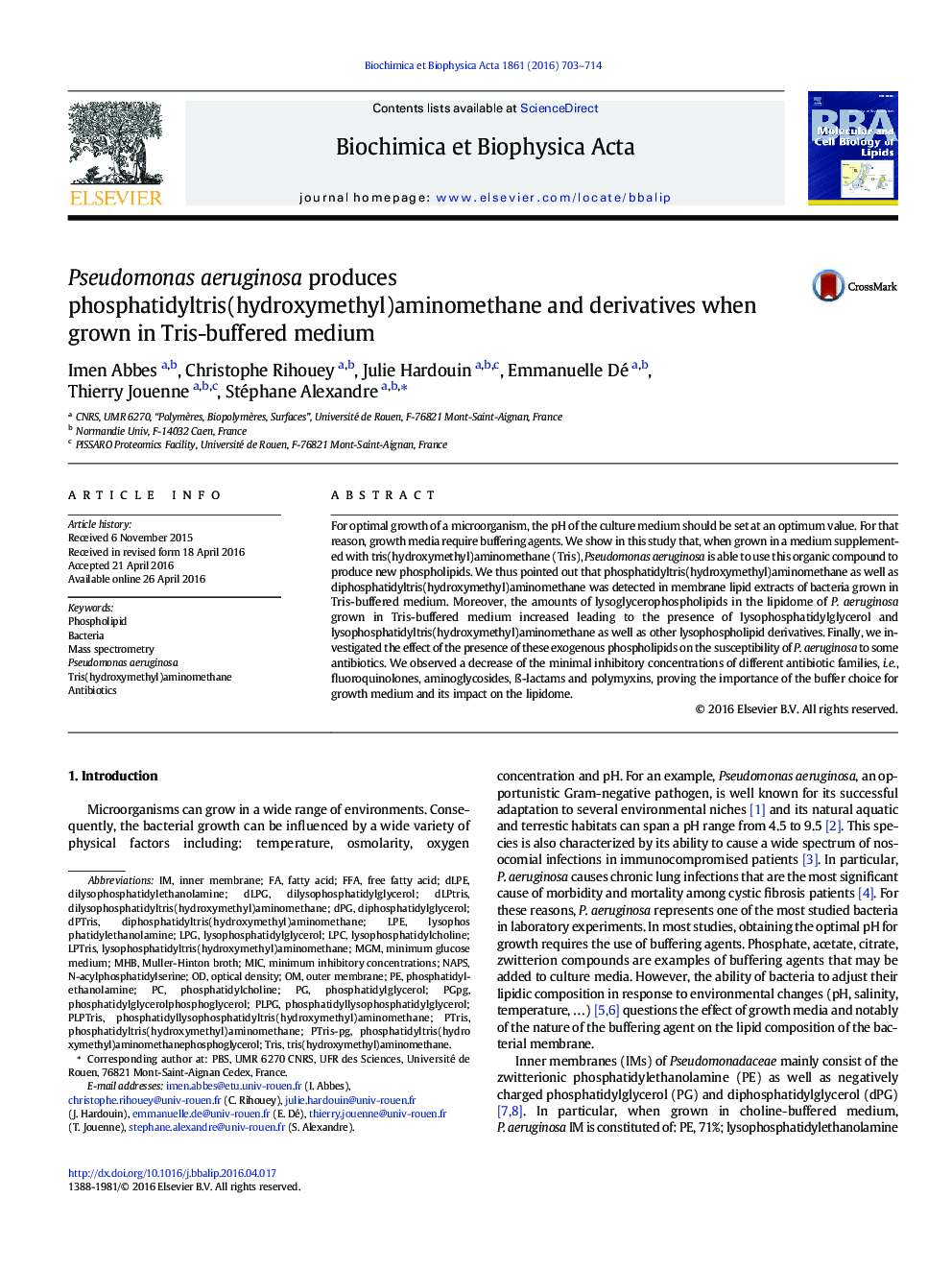| Article ID | Journal | Published Year | Pages | File Type |
|---|---|---|---|---|
| 1949049 | Biochimica et Biophysica Acta (BBA) - Molecular and Cell Biology of Lipids | 2016 | 12 Pages |
Abstract
For optimal growth of a microorganism, the pH of the culture medium should be set at an optimum value. For that reason, growth media require buffering agents. We show in this study that, when grown in a medium supplemented with tris(hydroxymethyl)aminomethane (Tris), Pseudomonas aeruginosa is able to use this organic compound to produce new phospholipids. We thus pointed out that phosphatidyltris(hydroxymethyl)aminomethane as well as diphosphatidyltris(hydroxymethyl)aminomethane was detected in membrane lipid extracts of bacteria grown in Tris-buffered medium. Moreover, the amounts of lysoglycerophospholipids in the lipidome of P. aeruginosa grown in Tris-buffered medium increased leading to the presence of lysophosphatidylglycerol and lysophosphatidyltris(hydroxymethyl)aminomethane as well as other lysophospholipid derivatives. Finally, we investigated the effect of the presence of these exogenous phospholipids on the susceptibility of P. aeruginosa to some antibiotics. We observed a decrease of the minimal inhibitory concentrations of different antibiotic families, i.e., fluoroquinolones, aminoglycosides, Ã-lactams and polymyxins, proving the importance of the buffer choice for growth medium and its impact on the lipidome.
Keywords
Related Topics
Life Sciences
Biochemistry, Genetics and Molecular Biology
Biochemistry
Authors
Imen Abbes, Christophe Rihouey, Julie Hardouin, Emmanuelle Dé, Thierry Jouenne, Stéphane Alexandre,
